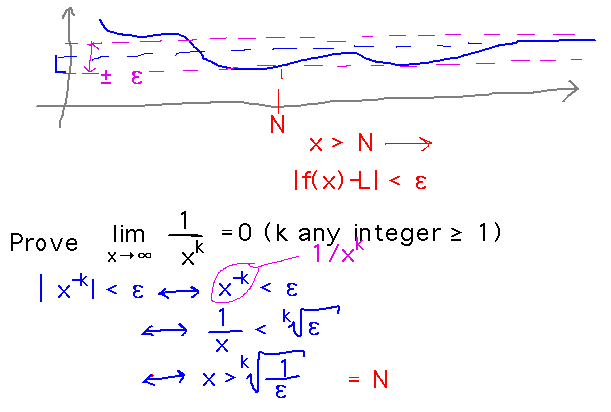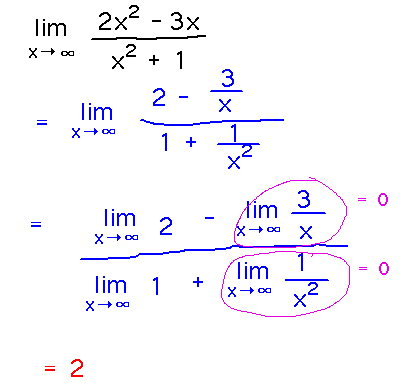Misc
Course Comments
Please return questionnaires by Friday (Oct. 27), if you want to return them.
Problem Set 7
Mostly covers extreme values, shapes of graphs, etc.
See handout for details.
Questions?
Limits and Asymptotes
Section 4.6
The Foundation
Examples. Find limx→∞ (2x2 - 3x)/(x2+1)
Describe the end behavior of f(x) = x sinx
Does y = (3x + 2)/5x have any horizontal asymptotes? If so, where? What about oblique asymptotes?
Commonalities. What common idea from the reading underlies solving all of these problems (and similar ones)?
- Limits as x becomes infinite
- So understanding those limits is the starting place for understanding the whole section.
Theory and Application
Like many other kinds of limits, working with limits as x approaches ∞ is best done by identifying a few relevant laws and then trying to use algebra or other laws to rewrite specific limit problems into forms to which those laws apply.
One major law is that limx→∞ (1/xk) = 0. Prove it.
Reading idea: limx→∞ (f(x)) = L if for all ε, there exists an N such that if x > N, then |f(x)-L| < ε

Finding limits. Find limx→∞ (2x2 - 3x) / (x2 + 1)
Reading idea: When the numerator and denominator of a ratio of polynomials have the same degree, the limit is just the ratio of the coefficients of the highest-degree term. So in this case the limit should be 2.
Verify this by rewriting the limit and using limit laws.

Take-Aways
Two important laws regarding limits as x approaches ∞
- limx → ∞ xk = ∞
- limx → ∞ 1/(xk) = 0
Dividing by the highest power in the denominator is generally a good trick for finding limits of rational functions (ratios of polynomials).
Next
Asymptotes.
Finish reading or review section 4.6.